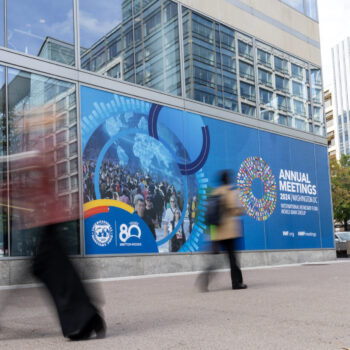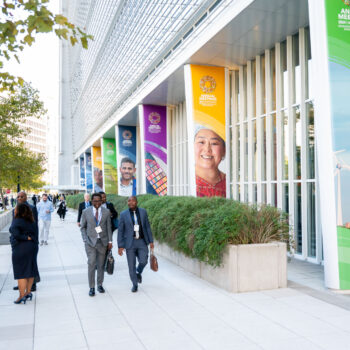Development finance institutions across Asia are beginning to implement their commitment to aligning their financial flows with the goals of the Paris Agreement on climate change. Some have made more progress, whereas others appear to have only just begun.
This report assesses the level of Paris Agreement alignment within the Asian Development Bank, Asian Infrastructure Investment Bank, China Development Bank, Japan International Cooperation Agency, Korea Development Bank and the World Bank. It uses 10 indicators or metrics to assess progress on the various facets of climate action, including mitigation and adaptation, climate risk, greenhouse gas accounting and others.
We hope this study will therefore provide a framework for the banks, their shareholders and stakeholders to think about what Paris Agreement alignment means in practice for these institutions, and provide some pointers on areas which need to be prioritised in order to deliver the commitment to Paris goals.It is useful to also note that the Paris Agreement represents the combined will of its Parties, providing a legal framework under which additional actions or even new goals may be agreed in the future. The process of Paris alignment should therefore be sufficiently flexible to cope with these moving goalposts.
The metrics or criteria we used have been categorised using the six ‘building blocks’ of Paris alignment as set out by the multilateral development banks in late 2018, as part of efforts to find a common terminology of Paris alignment: mitigation, adaptation, climate finance, policy support, reporting and internal activities. The conclusion of the analysis is presented in the colour-coded table below. The table shows that the banks covered in this report are making relatively good progress in promoting green finance and incorporating climate risk, whereas fossil fuel policies, green-brown energy ratios and energy efficiency standards are proving more challenging.
In order to help development finance institutions consider all options when considering how to operationalise the Paris Agreement, the ‘Tools for Paris alignment’ section lists a selection of policies and measures that development finance institutions from around the world are considering, implementing or could implement as part of their alignment with Article 2.1.c. It is for each bank to consider which tool works best for them, and how to adapt them to their own circumstances. Ideas include technical assistance focused on ensuring a socially just transition, a “do no harm” to the Paris goals and working with financial intermediaries to put in place decarbonisation plans.
The analysis of the six Asian banks shows a mixed picture, with no one bank fully Paris aligned across all ten indicators. All banks have areas where they need to accelerate progress. This report provides both bank-by-bank summaries of performance on the various metrics, as well as topic-by-topic chapters that contain detailed analysis on the various indicators.
For each bank we have produced three recommendations for the priority next steps for Paris alignment at that institution.
The Asian Development Bank should use its forthcoming energy policy review to put in place a goal for 100% zero-carbon lending; increase its finance for climate adaptation; and set an ambitious energy efficiency target.
The Asian Investment and Infrastructure Bank should boost its climate risk management processes across its portfolio; establish an overarching climate change strategy; and consider setting up climate-related technical assistance programmes.
The China Development Bank should take measures to re-balance its green-brown energy lending ratio which appears (according to the available data sources used in this report, see more information in the Chapter on Green-brown ratios) to be heavily skewed towards fossil fuel projects; include climate risk considerations in its regular country risk reports; and implement a fossil fuel exclusion policy.
The Japan International Cooperation Agency should phase out its proactive support for coal-fired power stations; insist on its own energy efficiency standards rather than giving way to national standards; and properly align its technical assistance with a Paris-compliant pathway.
The Korea Development Bank needs to put in place a climate strategy; add fossil fuels to its exclusion lists; and fully implement the environmental and social risk management framework that it has signed up to under the Equator Principles.
The World Bank needs to strive for more transparency in, and establish targets on, its greenhouse gas emissions; adopt more stringent energy efficiency standards; and take steps to address its poor green-brown energy lending ratio.
A draft of this report was shared with all the banks and their comments incorporated where appropriate.
There is a clear need going forwards for more transparency on the various policies and measures in place at all development finance institutions but particularly at the bilateral development banks. China Development Bank and Korea Development Bank in particular have made very little information publicly available on many of the metrics covered in this report. There is also a need for more transparency and standardisation as regards the quantitative data that development finance institutions publish on climate finance and their wider operations.
Finally the report ends with some reflections on the long-term role of development finance institutions in the global financial system. There is a role for these banks in planning for the next financial crisis – which could be triggered by a climate change driver – and what the global, climate-smart response to it could be. More research and thinking is needed in this field, and E3G looks forward to engaging with key stakeholders on this topic in the future.
Read the Foreword to the report by Christiania Figueres here.


